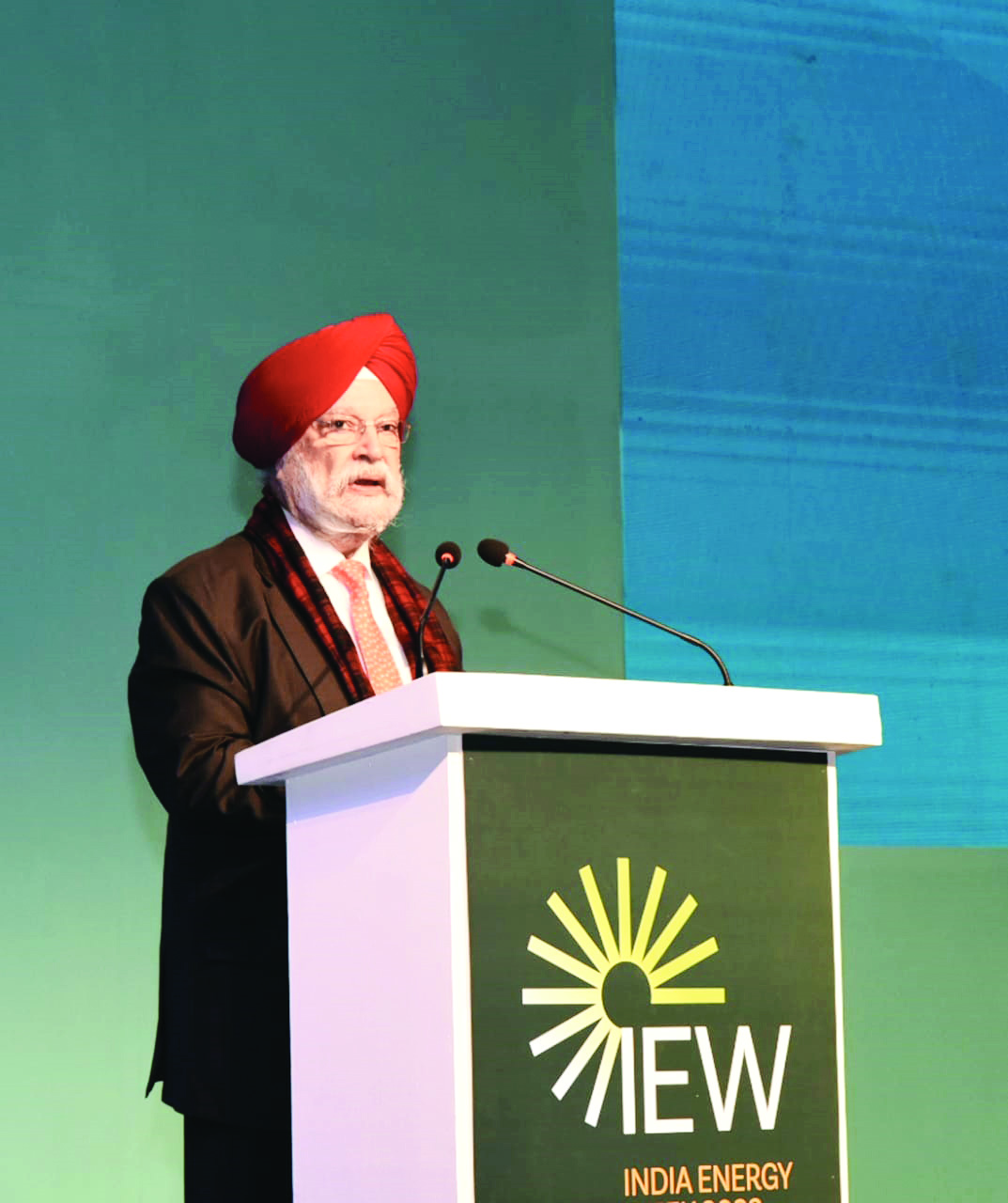India’s energy transition path involve a variety of solutions to support economic growth: Puri

Bengaluru: Union Petroleum and Natural Gas Minister Hardeep Singh Puri said that advanced bio fuels, green hydrogen, renewable and nuclear will play a critical role in the energy mix as India charters its path to the energy transition. While addressing the 9th Asian Ministerial Energy Roundtable on Tuesday at the India Energy Week in Bengaluru, the minister also mentioned, “India’s energy transition path will involve a variety of energy solutions to support energy and economic growth.”
India’s target of reaching 40 per cent of the installed capacity from non-fossil energy sources by 2030 has already been achieved in November 2021. The country’s installed Renewable Energy (RE) capacity by October 2022 stands at 166 GWh while its nuclear energy-based installed electricity capacity stands at 6.78 GWh. The minister added that India is also setting up 2G refineries utilizing agricultural waste and bamboo to make ethanol, using indigenous technology. “This contributes to achieving rural prosperity and also goes a long way in reducing pollution along with achieving energy security goals,” Puri added.
Meanwhile, the Indian government claims that the energy transition will be more of a wave of managed change in the global energy portfolio versus an event, ensuring energy access and security, progressing to net zero. Whereas, this requires global coordination and access to skills, technology, and global financing. Moreover, the petroleum and natural gas minister feels that the incumbent government’s effort and policies on energy involve a variety of energy solutions to drive to net zero - drawing on renewables, nuclear, and advanced biofuels, as well as the critical role of gas in the energy transition, whether from current supplies of natural gas, LNG and LPG or into a future shaped by their low carbon alternatives in the form of hydrogen, ammonia and green LPG.
“India’s energy transition, therefore, is extraordinary not just in terms of scale and coverage but also creates hope and a blueprint for the world’s developing nations who are facing similar challenges. India is undertaking an ambitious journey of energy transition to achieve net carbon zero by 2070. However, this transition has to be stable and just to ensure that it is sustainable,” Puri asserted.
On the other hand, climate change is a global concern now- the stakes are particularly high for the Asia region with the temperature rising two times faster than the global average and a low carbon emission pathway for development is the key to mitigating climate change. The minister added that “However, the reality is more complex because the starting point and the capacity of each country and region to transition from a reliance on conventional hydrocarbons to low-carbon energy are different across the globe. This is demonstrated by major differences in the level of detail and ambition of nationally declared commitments (NDCs) in the pursuit of net zero at the country and regional levels.”
“The economies world over, particularly the emerging economies, are facing the daunting task of safeguarding energy security, affordability and accessibility which has created the cost-of-living crisis,” Puri added further. At the same time, the minister also warned that the energy crisis has a ripple effect on other sectors as well. The unprecedentedly high level of gas prices has created a fertilizer crisis which in turn has created food security concerns across the world. Further, the high energy and commodity prices have raised inflationary concerns and many countries are facing recessionary fears.



